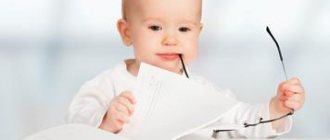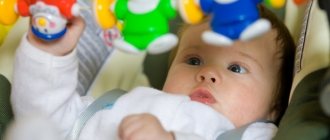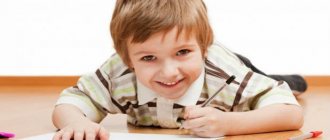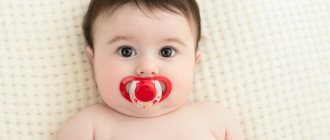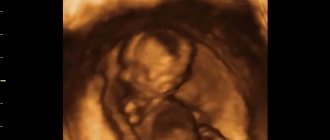Three year old little adult
At this age, the child is ready to master skills that require good coordination of movements. For example, you can teach him to ride a tricycle, ski and skate, teach him to swim, and play football. The mental development of 3-year-old children requires complex tasks and as much age-appropriate information as possible.
The developmental characteristics of 3-year-old children are associated with the mother’s return to work and attendance at kindergarten, as well as with the “three-year crisis.” At the same time, this is the time of the birth of fantasies and awareness of oneself as an individual. The child wants to show himself to adults and very zealously defends his opinion. The hallmarks are stubbornness, self-will and denial. The baby refuses to eat, sleep, or clean up after himself; hysterics often occur. The child is still unable to control the manifestation of emotions, and therefore he himself suffers from their excessive manifestations.
Kindergarten also has an impact on the development of 3-year-old children. The child is forced to adapt to the requirements of the teachers, observe a stricter regime, and also establish connections with other children. Therefore, the task of parents is to find a “golden mean” in communication and in raising their child, taking into account the complex psychological load.
Children at 4 years old
Based on the average indicators of what a child at this age should be able to do, the following skills can be distinguished:
- Name geometric shapes and compare them with surrounding objects.
- Give names to objects and assign them to groups (furniture, animals, vehicles, etc.).
- Know the characteristics of some professions.
- Be able to navigate in space (distinguish between “right”, “left”, “ahead” and so on).
- Be able to compare objects based on their magnitude parameters.
- Be able to color pictures without going beyond the lines.
- Identify an object that has disappeared from a row.
- The development of speech in 4-year-old children already allows them to retell the contents of fairy tales.
- Determine the seasons, days, and distinguish between weather phenomena.
- Be able to write a description of an item in several sentences.
The listed knowledge and skills are average. Some children have these skills before they are four years old, some a little later, but all these are variants of the norm.
Developmental activities at home
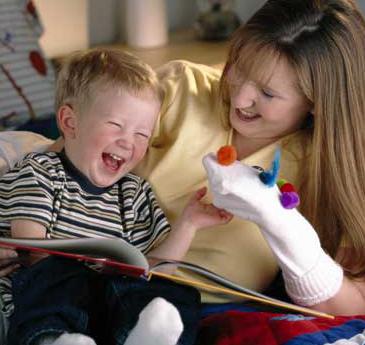
Thanks to this type of activity, the brain is successfully formed. An ideal example of an exercise is sculpting. Having taught your child to make balls and sausages, you can create several different items on any theme. For example, make vegetables and fruits, which will help consolidate knowledge about them, as well as develop fingers. A 3-year-old child will be happy to put objects into containers or find them in a scattering of grains, pasta, and seeds. If your child already speaks well, then you can engage him in describing images in books and magazines. This technique is successfully used while walking. For example, periodically asking: “What is uncle doing?”, “What is in aunt’s hands? Where is she going?" The child enjoys participating in role-playing games. For example, he will happily put a bear to bed, become a builder and build a tower, or turn into a hairdresser and do a doll’s hair. Speech development in 3-year-old children progresses at its own pace, but parents are able to speed it up.
Games and exercises
- name the characteristics of the object - the ball is round, green, big;
- match the action to the objects - the car is driving, the bunny is jumping, the ship is sailing;
- look at the picture and make up a short story about what is depicted on it (with the help of an adult).
Children aged 3 years cannot yet link sentences into a text, so the beginning of a phrase and connections between sentences is spoken by an adult, and the ending is spoken by the child. In everyday communication with your child, try to tell him more about everything that surrounds you and pay attention to small details. Teach your child to correctly use various prepositions (in, on, from) and the correct endings in words, look at pictures in books, comment on everything you see and ask the child about what he sees. Play role-playing games on different themes - to a store, school, hairdresser, repair shop. Develop conversational speech. Pay attention to fine motor skills - they are closely related to speech development.
Classes aimed at developing the speech of a 3-year-old child should be held exclusively in a playful form, be exciting and interesting.
Mathematical development
At 3 years old, children become familiar with numbers, shapes, and the concepts of size and quantity. Many children already know how to count to 5, distinguish between the concepts of “one” and “many”, “big” and “small”. During this period, it is important for the child to learn the image of quantity and the corresponding figure.
Games and exercises
- find the smallest and largest object in the picture;
- count the number of objects and find the corresponding number;
- count only balls or flowers;
- identify the circle, triangle and square in the picture;
- compare objects by size, shape and color.
For games, you can use counting sticks, cards with numbers, inserts in the shape of various geometric shapes, sorters, and cubes. You can introduce the concept of quantity to a 3-year-old child in everyday life - counting apples, candies, cubes, pencils, etc. together. This way, the process of mastering elementary mathematical concepts and actions will take place naturally and effortlessly.
Developmental activities at home with a four-year-old child
Sculpting and drawing techniques become more complex.
Your child can be taught to draw shapes, outline pictures, and work with a stencil. In addition to plasticine, clay is used, from which compositions on various themes are created. For the applique, the baby can cut out the necessary shapes himself. The development of a child at 4 years old is accompanied by simple mathematical operations - addition and subtraction. For better assimilation, use matches, sticks, fingers, that is, all available means. The development of speech in 4-year-old children is accompanied by exercises to memorize syllables.
Montessori method
The main principles of the Montessori system are the freedom and independence of the child within certain boundaries, the natural mental, physical and social development of the child.
Key characteristics of the technique:
- classes and games take place in a space divided into several thematic zones;
- groups include children of different ages;
- The child himself determines what he wants to do.
At the same time, children are taught to follow certain rules:
- Everything that the baby is able to do on his own, he does without the help of an adult.
- In the study room, children should be quiet and not disturb other children playing and studying.
- Whoever took this or a toy first plays with it. This is how the child develops an understanding of his own and others’ boundaries.
- The child must return the toys and various writing utensils used in classes to their original form - wash and fold everything. This builds respect for other people.
Rules help children feel more confident, bring stability to their daily routine, and instill in the child respect for other children and adults.
Child development program for 3-4 years old
Some parents prefer to work with their children according to a plan rather than free-style. The standard program of developmental activities for this age period contains the following points:
- Exercises to develop the sound culture of speech.
- Reading skills.
- Getting to know the world around you.
- Creative activities (drawing, modeling, appliqué).
- Mathematical operations.
- Musical development.
Let's look at each point in more detail.
Exploring the world around us
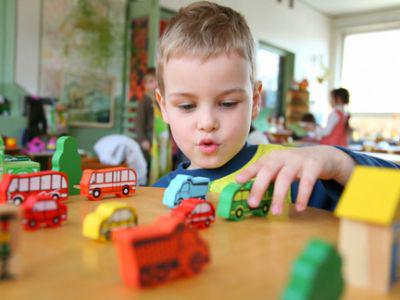
The exercises are aimed at exploring natural phenomena, understanding the differences in seasons and environmental features. For example, when observing migratory birds in the fall, a child is pointed out this feature of their flight to warmer regions as one of the signs of the season. At the same time, they are introduced to the names of birds that fly to warmer climes and those that remain to spend the winter. When observing the weather, different adjectives and verbs are used, thereby enriching the child’s speech. For example, it can be rainy, sunny, windy outside, and the rain can drizzle, knock, or pour. While walking, they pay attention to the trees and bushes, their appearance and names. Various crafts are made from natural materials. By the age of 4, a child should already be able to name primary colors and some shades and find them in surrounding objects. It would be useful to pay attention to traffic rules. Children aged 3-4 years develop at a rapid pace. The child learns interesting information well, especially if it is supported by examples in the world around him.
Methods for studying child mental development
⇐ PreviousPage 9 of 106Next ⇒Now let's move on to characterizing the methods for studying these psychological facts. The most realistic and effective method is the observation method. What's good about it?
First, facts about the child’s actual behavior are collected. The child behaves freely, and therefore true facts can be obtained.
Secondly, each child appears before the observer as a complete person. Everything we see and hear is not perceived in isolation, but in connection with other actions, words or deeds of the child.
Thirdly, if an observer (teacher, psychologist or doctor) has the opportunity to observe a child with his parents, he gets an idea of the nature of the relationship between them.
How to make observation as effective as possible?
The first and perhaps the main condition is to develop the ability to observe. Observation, generally speaking, is a necessary professional quality of a teacher, educator or doctor. To be observant means to actively watch and listen, to really pay attention to what the child is doing and saying, what he is trying to do or say, what he has already learned and what is currently beyond his ability or understanding.
The second condition for the effectiveness of observation is to correlate your observations with your knowledge of child development. The absence of the latter makes it impossible to compare what you see with the standards you know, and without this it is difficult to make informed conclusions.
The third condition is the organization of observation. It is clear that, for example, a pediatrician has little opportunity for detailed and extensive observation of a child’s behavior. Therefore, the ability to quickly, comprehensively and deeply observe comes with years of training. To increase the effectiveness of observation, its elementary organization is desirable, which is possible using various means.
One of them (the simplest) is drawing up child development cards . With their help, you can establish what the child already knows how to do, and therefore determine his level of achievement. The following headings are used in different development cards:
- physical development;
– communication and speech development (for example, expressiveness of speech, its understanding, etc.);
– social development and play (under this heading, games with adults and peers are noted; how the child plays, his interests, etc.);
– autonomy and independence, i.e. the ability to do without the help of adults while eating, dressing and undressing, using the toilet, etc.;
– child’s behavior.
The structure of the card is a list of individual points for each aspect of child development. Below is an example of a physical development card (Lashley J., 1991).
What advice should you give to the observer?
1. Justify your opinion (you must be responsible for your words).
2. Stick to your observations - don't try to generalize.
3. Refrain from value judgments. For example, you can say: “Petya is capricious because his mother does not stay with him when she brings him to kindergarten” (the statement contains a hidden reproach to the mother). Or you can do this: “Petya seems to calm down faster on those days when his mother manages to stay with him for a few minutes.”

Fragment of a physical development card

Fragment of a development card recording the child’s behavior
We can also recommend that parents keep such observation cards.
Significant information can be gleaned from a conversation with the child, which is usually recommended when working with children aged 6 to 15 years. According to N. A. Rusina and V. A. Uryvaev, topics for conversation can be:
– family : its members and relationships between them, tolerance, preferences, intimacy, dominance, dependence, aggression, intensity – extensiveness and activity – passivity of relationships, jealousy, envy, conflict, etc.;
– parents : educational methods and parental positions, views, interests, prospects of the child;
– participation in homework : its content, systematicity and independence;
- free time :
quantity and quality of conduct, under parental supervision, spontaneous or in a group; friend of the opposite sex; interests, hobbies;
– self-esteem : general self-esteem, appearance, abilities; hopes, ideals; self-satisfaction, expectations;
– school : the course of education, how it proceeds, changing schools, attachment to school. Study: academic performance, behavior, preferred subjects, attitude towards exams (stress level). Level of aspiration. Classmates: class status, friends and enemies, relationships. Teachers: student perception of teachers’ attitude towards themselves and other students, degree of popularity, presence of conflicts;
– fears and concerns : the presence and objects of fears, night terrors)
– health status : chronic diseases, self-assessment of health status (Rusina N.A., Uryvaev V.A., 1998).
Based on the results of observation and conversation with the child, one can make reasonable conclusions about his psychological characteristics. In this case, an assessment should be made of the child’s temperament and character. When assessing character, pay attention to the child’s relationship to other people, peers, adults, to business, to himself.
Another group of methods for studying a child is experiment .
For a doctor and teacher, the most acceptable form of experiment may be research using tests. The test is a standardized task to determine the development of various mental processes in a child. The positive aspects of testing usually include:
– the ability to determine the norm of development;
– the possibility of conducting repeated, that is, comparative tests;
– the ability to simultaneously collect a large volume of material;
– lack of long-term special training.
At the same time, the tests have their drawbacks that limit their use. Child and developmental psychology is rich in a variety of test procedures. Among them there are many reliable, well-proven ones. However, most often only express methods can be practically applicable. They are easy to use, do not require lengthy data processing or complex and detailed analysis of the information received.
Chapter 12
Personal development
The development of a person as an individual occurs in the general context of his “life path” (S. L. Rubinstein), which is defined as the history of “the formation and development of a person in a certain society, the development of a person as a contemporary of a certain era and a peer of a certain generation.” According to B. G. Ananyev, the life path has certain phases associated with changes in lifestyle, system of relationships, life program, etc. “The phases of the life path overlap the age stages of ontogenesis, and to such an extent that at present some age stages are designated precisely as phases of the life path, for example, pre-preschool, preschool and school childhood” (Ananyev B.G., 1977, p. 266).
Personal development as a process of “socialization of the individual” is carried out in certain social conditions of the family, immediate environment, in certain socio-political, economic conditions of the region, country, in the ethno-sociocultural, national traditions of the people of which he is a representative. This is a macro-situation of personal development.
At the same time, at each phase of the life path, as L. S. Vygotsky emphasized, certain social situations of development develop as a unique attitude of the child to the social reality around him. According to L. S. Vygotsky, the social situation of development “determines entirely those forms and the path along which the child acquires new personality properties, drawing them from social reality as the main source of development, the path along which the social becomes individual” (Vygotsky L.S., 1984, pp. 258–259).
The social situation of development, including a system of relationships, various levels of social interaction, various types and forms of activity, is considered as the main condition for personal development. This situation can be changed by a person, just as he tries to change his place in the world around him, realizing that it does not correspond to his capabilities. If this does not happen, then an open contradiction arises between the child’s lifestyle and his capabilities (A. N. Leontyev).
According to A.V. Petrovsky, the social situation of development itself, or more broadly, the social environment, can be stable or changing, which means relative stability and changes in the social community in which the child, the person, is located.
The entry of a child as a social being into the life of this community involves the passage of three phases: adaptation to the norms, forms of interaction, and activities in force in this community; individualization as satisfying “the individual’s need for maximum personalization” and integration of the individual in this community.
If individualization is characterized by “the search for means and ways to designate one’s individuality” in order to remove the contradiction between this desire and the result of adaptation (“became the same as everyone else in the community”), then integration “is determined by the contradictions between the desire of the subject that developed in the previous phase to be ideally represented by his own characteristics and differences that are significant for him in the community and the need of the community to accept, approve and cultivate only those individual characteristics demonstrated by him that appeal to it, correspond to its values, contribute to the success of joint activities, etc.” (Petrovsky A.V., 1984). Joint activity carried out within the framework of leading activity, given by “the specific social situation of development in which his (the child’s) life takes place” (A. G. Asmolov), is one of the main conditions for the development of the individual in any social situation.
Adaptation, individualization, integration (according to A.V. Petrovsky) act as mechanisms of interaction between a person and the community, mechanisms of his socialization and personal development, which occurs in the process of resolving contradictions that arise in this interaction. A person’s personal development correlates with the formation of his self-awareness, the image of “I” (“I”-concept, “I”-system), with changes in the sphere of needs and motivations, orientation as a system of relationships, with the development of personal reflection, the mechanism of self-esteem.
All aspects of personal development are characterized by internal inconsistency and heterogeneity. Thus, using the example of changes in the self-esteem of a junior schoolchild, it is shown that personal development is asynchronous in structural components, both quantitatively and qualitatively. It was noted that only by the end of this age the process of self-esteem of the child leads to the formation of his self-esteem as a personal formation. At the same time, according to A.V. Zakharova, with age, in all types of activities, the number of inflated self-esteem decreases and the number of underestimated ones increases, which indicates an increase in children’s critical attitude towards themselves. However, this does not increase the adequacy of self-esteem. The number of students with adequate self-esteem does not exceed 40–50%.
Development factors
Arbitrariness and self-regulation are the basis of a child’s intellectual and personal development. The arbitrariness of behavior is based on a gradual transition from external regulation to self-regulation.
Personally, as well as intellectually, the development of a child moves from involuntary, impulsive, situational behavioral reactions and behavior in general to its arbitrariness and adjustability. This tendency is manifested in the child’s ability to manage his behavior, consciously set goals, deliberately seek and find means of achieving them, overcoming difficulties and obstacles. Arbitrariness and self-regulation are the core line of a child’s intellectual and personal development. The arbitrariness of behavior is based on a gradual transition from external regulation to self-regulation. This trend can be seen especially clearly in the development of self-control, which is derived from external control and evaluation. Experienced teachers always take into account these features of developmental psychology when it is necessary to organize testing and assessment of schoolchildren’s knowledge. From external to internal, from activities organized by the teacher to their self-organization by the student - this is the main path of personal development and self-development of the student.
In the studies of L. S. Vygotsky, A. N. Leontyev, D. B. Elkonin, L. I. Bozhovich, it was shown that the development of a child as an individual is determined by the consistent formation of personal new formations. L. I. Bozhovich analyzes them within 5 age periods of a child’s personal development (Bozhovich L. I., 1978, pp. 30–34). “The central, that is, personal, new formation of the 1st year of life is the emergence of affectively charged ideas, which motivate the child’s behavior despite the influences of the external environment.” L. I. Bozhovich calls these ideas “motivating”. Their action frees the child from the “dictation of external influences.” Although he himself does not yet realize it, he begins to become a subject. By the 3rd year of life, that is, by the end of early childhood, “the central new formation... is the “I system” and the need to act on one’s own, born of this new formation,” which is expressed in the formula “I myself.” “The need for realization and affirmation of one’s Self... is dominant.” During this period of development, two forces collide – “I want” and “I need”. Self-awareness is being formed.
The period up to 7–8 years old is correlated by L. I. Bozhovich with the formation of a child as a “social individual”: “He has a need for a new position in life and socially significant activities that ensure this position.” By the age of 12–14, the “ability to set goals” is formed, that is, to identify and set conscious goals, and by the age of 15–16, a “life perspective.”
The age periods considered by L. I. Bozhovich coincide with the periods of crises of the 1st and 3rd years of life, with the crisis of 7 years and adolescence. The main, most important conclusion for pedagogical practice, taking into account the previously cited provisions of L. S. Vygotsky, is that the teacher needs to take into account these features of the student’s personal development. This will help relieve the severity of age-related crises in schoolchildren, prevent the occurrence of frustration (mental stress, anxiety, etc.) and nervous breakdowns.
For a correct understanding of the development of a child’s personality, the early periods (up to 7 years) are of particular interest. This is in the proper sense of the word “personogenesis”, that is, the formation and individual development of personality. One of the leading researchers of this problem, V. S. Mukhina, considers personality development as a level, sequential formation of the structure of a child’s self-awareness.
Development mechanisms
The mechanisms of personality development, according to V. S. Mukhina, are: identification, isolation and their interaction.
There are five links in this structure: proper name and body, claim to recognition, gender identification, psychological time and social space of the individual. The mechanisms of personality development, according to V.S. Mukhina, are: identification, isolation and interaction between them (Mukhina V.S., 1997, pp. 56–97). As the author emphasizes, “a universally significant value for society and the individual is the structure of human self-awareness, which is formed by a proper name, self-esteem and the claim to recognition, presentation of oneself as a representative of a certain gender, presentation of oneself in time (in the past, present and future), assessment of oneself in regarding rights and obligations” (Mukhina V.S., 1986, p. 58). Numerous studies conducted by V.S. Mukhina and her students show how attentive a teacher should be to a student. When choosing forms of address to a first-grader, especially a six-year-old, he must remember that the child’s last name “alienates” him - he is accustomed to his name. V. S. Mukhina advises at the beginning of training to address children (especially from disadvantaged families) by name and not be afraid to positively evaluate the child’s actions: “Petya, you’ve done well!”, “Masha is smart today”
etc. Realizing himself as a boy or girl, a child, with the help of a teacher and family, forms his gender (social) position. The boy must be stronger, he must take care of the girl, be attentive to her. V.S. Mukhina rightly notes that constantly uniting children under the common message “Children!” or “Guys!” not quite right. It is necessary to emphasize and record the specificity of what the attention of girls (femininity, restraint, gentleness, kindness, cleanliness, neatness, humanity, attentiveness, compassion, etc.) and boys (courage, determination, responsibility, generosity) is directed to during the formation of a child’s personality , honesty, etc.). V. S. Mukhina’s idea about the peculiarities of forming a child’s life prospects on the basis of managing his ideas about himself in the past, future and present is significant. The life position of first-graders can be formulated as follows: today for the sake of tomorrow. Her research showed that the overwhelming number of children are focused not on their past, but on the future. This provision applies primarily to normal, and not to deprived development (that is, development in the process of which such needs as the claim to recognition, etc., are not satisfied). It is especially important to take it into account for a teacher working during the restructuring of the social structures of society, changing existing opinions, stereotypes in the individual consciousness of people, and in particular children. The teacher must purposefully formulate the child’s optimistic idea of the future, strengthen positive life prospects, and resist pessimism.
Developing a general concept of humane educational training aimed at the formation of a full-fledged active personality (Ya. Korczak, L.N. Tolstoy, K.D. Ushinsky, V.A. Sukhomlinsky, V.V. Davydov and many others), V.S. Mukhina pays special attention to the formation of a child’s attitude towards the rights and responsibilities accepted in society. The author offers a fruitful idea of turning children’s responsibilities into their rights, awareness and understanding of which “raises” the child’s self-esteem. Let’s compare the usual address: “Guys, you must sit quietly”, “You must work independently in class”
and the form proposed by V.S. Mukhina:
“Children, you have the right to silence, to independent work - take advantage of these rights.”
The structure of self-awareness of a child’s personality developed by V. S. Mukhina: “I am Petya - a good boy - was, is, will be - I have the right, I must”
“represents the basis that is visible in the whole person, acquiring meaningful content depending on traditions, social structure, on the one hand, and the individual path of personality development, on the other” (Mukhina V.S., 1986, p. 64). The components of this structure are represented in the self-awareness of each schoolchild, and of course, depending on the level of his personal and age development, they determine his position as a student, his attitude towards learning, the teacher, and school.
According to A.V. Petrovsky, personality development can be presented as a unity of continuity and discontinuity. “Continuity in the development of a personality (as a system) expresses the relative stability in the pattern of its transition from one phase to another in a given community, its reference. Discontinuity characterizes qualitative changes generated by the peculiarities of the individual’s inclusion in new specific historical conditions, which are associated with the action of factors related to its interaction with “neighboring” systems, in this case with the educational system accepted in society” (Petrovsky A.V., 1987 , p. 21). According to A.V. Petrovsky, the personal development of a person, going through a state of adaptation, individualization and integration as macro- and microphases of this process, is determined by the entire situation of social development.
The given interpretation of personality development, developed primarily by Russian psychology (A. N. Leontiev, B. G. Ananyev, A. V. Petrovsky, L. S. Vygotsky), is in line with the concept according to which, according to L. S. Vygotsky , “development is a continuous process of self-movement, characterized primarily by the continuous emergence and formation of something new that was not at previous levels... the unity of the social and personal as the child ascends the stages of development” (Vygotsky L.S., 1984, p. 248).
Another interpretation of development, according to L. S. Vygotsky, is embodied in theories of creative evolution, guided by the autonomous, internal, vital impulse of a purposefully self-developing personality, the will to self-affirmation and self-improvement (Vygotsky L. S., 1984, p. 248).
S. D. Smirnov’s analysis of the driving forces and conditions of personality development, presented in widely known foreign concepts, shows how these forces and conditions are interpreted:
– according to Z. Freud, the basis of individual and personal development are innate drives or instincts, where biological drives are recognized as the only source of mental energy;
– according to K. Jung, development is “individualization” as differentiation from community. The ultimate goal of individualization is to achieve the highest point of “selfhood,” integrity and complete unity of all mental structures;
– according to A. Adler, a person is inherent from birth with a “sense of community”, or “social feeling”, which encourages him to enter society, overcome the feeling of inferiority that usually arises in the first years of life, and achieve superiority through various types of compensation;
– according to K. Horney, the main source of energy for personality development is a feeling of anxiety, discomfort, “root anxiety” and the desire for security generated by it, etc.
It is obvious that personal development, the formation of a person as an individual, a social being, is so multifaceted that it can be simultaneously determined by both external and internal conditions. “Two main contradictions determine the essence of man, his development and the diversity of his essential qualities and their combinations into characterological complexes. These are: a) alienation from nature and connection with it; b) alienation from society, group, other people and connection with them” (Shadrikov V.D., 1993, p. 27). Unfortunately, many theories and methods of developmental psychology based on them absolutize the role of individual developmental conditions.
Life path
– the history of the formation and development of an individual in a certain society, the development of a person as a contemporary of a certain era and a peer of a certain generation.
Chapter 13
⇐ Previous9Next ⇒
Math teaching
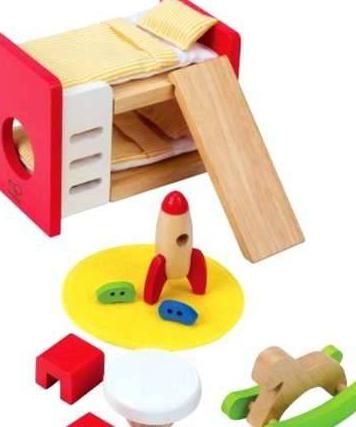
At the age of three, a child successfully masters geometric shapes and different shapes. By the age of 4, classes become more complicated, the child is able to group objects according to different external characteristics (color, size). The child learns the concepts of “less”, “more”, “equal” using available means. Good at counting to three. The mathematical development of a child at 4 years old is manifested in the ability to perform basic counting operations. Basic spatial directions can be easily taught through play, for example, by hiding a toy and giving specific clues (“Go forward, turn left…”). By the age of four, a child can determine what starts earlier and what starts later. For example, morning comes first, then day, then evening and night.
Creative development
Creative activities are very beneficial for young children. They develop artistic taste, imagination and fantasy, and play an important role in the development of fine motor skills and perseverance. At the age of 3 years, children enjoy drawing with pencils and paints, sculpting from plasticine, and making crafts and applications together with their parents. They can draw a sun, a cloud, a person, as well as simple geometric shapes. By drawing, the child gets acquainted with colors and shapes, masters various techniques and materials.
Speech development
A 3-year-old child is able to remember small rhymes and sing along. Parents teach the alphabet and prepare their hands for writing. Closer to the age of four, you can begin to learn syllables and try to read the first simple books. By this age, the child remembers riddles, proverbs and sayings.
Normal speech development of 4-year-old children is manifested in the composition of phrases of 5-6 words. The child often asks questions: “Why?”, “Where from?” He is interested in everything and needs to know everything. In order for the speech development of children 3-4 years old to progress at a rapid pace, parents need to answer all the child’s questions, but in a language accessible to him.
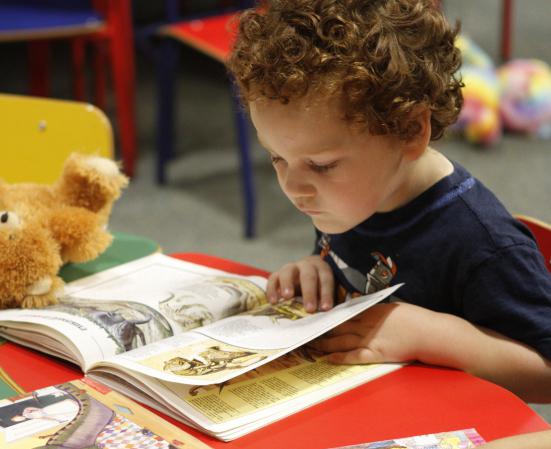
Methods and techniques for developing children's speech in preschool institutions
A short mind has a long tongue. Aristophanes
IS - information block
Text No. 1.
The methodology uses methods developed in didactics. (See: Radina E.I. Teaching methods//Issues of teaching in kindergarten/Ed. A.P. Usova. - M., 1955; Fundamentals of preschool pedagogy/Ed. A.V. Zaporozhets, T.A Markova. – M., 1980.)
The method of speech development is defined as a way of activity of the teacher and children, ensuring the formation of speech skills and abilities.
Methods and techniques can be characterized from different points of view (depending on the means used, the nature of the cognitive and speech activity of children, the section of speech work).
Generally accepted in the methodology (as in preschool didactics in general) is the classification of methods according to the means used: visualization, speech or practical action. There are three groups of methods - visual, verbal and practical. This division is very arbitrary, since there is no sharp boundary between them. Visual methods are accompanied by words, and verbal methods use visual techniques. Practical methods are also associated with both words and visual material. The classification of some methods and techniques as visual, others as verbal or practical depends on the predominance of visibility, words or actions as the source and basis of the statement.
Visual methods are used more often in kindergarten. Both direct and indirect methods are used. The direct method includes the observation method and its varieties: excursions, inspections of the premises, examination of natural objects. These methods are aimed at accumulating the content of speech and providing communication between two signaling systems.
Indirect methods are based on the use of visual clarity. This is looking at toys, paintings, photographs, describing paintings and toys, telling stories about toys and paintings. They are used to consolidate knowledge, vocabulary, develop the generalizing function of words, and teach coherent speech. Indirect methods can also be used to get acquainted with objects and phenomena that cannot be encountered directly.
Verbal methods are used less frequently in kindergarten: reading and storytelling of works of art, memorization, retelling, general conversation, storytelling without relying on visual material. All verbal methods use visual techniques: showing objects, toys, paintings, looking at illustrations, since the age characteristics of young children and the nature of the word itself require visualization.
Practical methods are aimed at using speech skills and abilities and improving them. Practical methods include various didactic games, dramatization games, dramatizations, didactic exercises, plastic sketches, and round dance games. They are used to solve all speech problems.
The characteristics of speech development methods outlined above do not fully take into account the essence of students’ speech activity itself. In school methodology, there is a search for ways to intensify methods of work to develop students’ speech, taking into account the nature of speech. An analysis of the methods of speech development in kindergarten from these positions will also make it possible to understand the role and place of each method in the formation of children’s language ability.
Depending on the nature of children’s speech activity, reproductive and productive methods can be roughly distinguished.
Reproductive methods are based on reproducing speech material and ready-made samples. In kindergarten, they are used mainly in vocabulary work, in the work of educating the sound culture of speech, and less in the formation of grammatical skills and coherent speech. Reproductive methods can conditionally include methods of observation and its varieties, looking at pictures, reading fiction, retelling, memorizing, games-dramatization of the content of literary works, many didactic games, i.e. all those methods in which children master words and the laws of their combination, phraseological phrases, some grammatical phenomena, for example, the management of many words, master by imitation of sound pronunciation, retell close to the text, copy the teacher’s story.
Productive methods involve children constructing their own coherent utterances, when the child does not simply reproduce the language units known to him, but selects and combines them in a new way each time, adapting to the communication situation. This is the creative nature of speech activity. From this it is obvious that productive methods are used in teaching coherent speech. These include generalizing conversation, storytelling, retelling with text restructuring, didactic games for the development of coherent speech, modeling method, creative tasks.
There is also no sharp boundary between productive and reproductive methods. There are elements of creativity in reproductive methods, and elements of reproduction in productive ones. Their ratio fluctuates. For example, if in a vocabulary exercise children choose from their vocabulary the most suitable word to describe an object, then in comparison with the same choice of a word from a number of given ones or repeating after the teacher when viewing and examining objects, the first task is more creative in nature. In independent storytelling, creativity and reproduction can also manifest themselves differently in stories based on a model, plan, or proposed topic. Characterization of well-known methods from the point of view of the nature of speech activity will make it possible to more consciously use them in practice with children.
Depending on the task of speech development, methods of vocabulary work, methods of educating the sound culture of speech, etc. are distinguished.
Methodological techniques for developing speech are traditionally divided into three main groups: verbal, visual and playful.
Verbal techniques are widely used. These include speech pattern, repeated speaking, explanation, instructions, assessment of children's speech, question.
A speech model is a teacher’s correct, pre-thought-out speech activity, intended for children to imitate and guide them. The sample must be accessible in content and form. It is pronounced clearly, loudly and slowly. Since the model is given for imitation, it is presented before the children begin their speech activity. But sometimes, especially in older groups, a model can be used after children’s speech, but it will not serve for imitation, but for comparison and correction. The sample is used to solve all problems. It is especially important in younger groups. In order to attract children's attention to the sample, it is recommended to accompany it with explanations and instructions.
Repeated pronunciation is the deliberate, repeated repetition of the same speech element (sound, word, phrase) with the aim of memorizing it. In practice, different repetition options are used: behind the teacher, behind other children, joint repetition of the teacher and children, choral repetition. It is important that repetition is not forced, mechanical, but is offered to children in the context of activities that are interesting to them.
Explanation - revealing the essence of certain phenomena or methods of action. Widely used to reveal the meanings of words, to explain the rules and actions in didactic games, as well as in the process of observing and examining objects.
Directions – explaining to children the method of action to achieve a certain result. There are instructional, organizational and disciplinary instructions.
Assessment of child speech is a motivated judgment about a child’s speech utterance, characterizing the quality of speech activity. The assessment should not only be of a stating nature, but also educational. The assessment is given so that all children can focus on it in their statements. Assessment has a great emotional impact on children. It is necessary to take into account individual and age characteristics, to ensure that the assessment increases the child’s speech activity, interest in speech activity, and organizes his behavior. To do this, the assessment primarily emphasizes the positive qualities of speech, and speech defects are corrected using a sample and other methodological techniques.
A question is a verbal address that requires an answer. Questions are divided into main and auxiliary. The main ones can be ascertaining (reproductive) - “who? What? Which? which? Where? How? Where?" and search, requiring the establishment of connections and relationships between phenomena - “why? For what? how are they similar? Auxiliary questions can be leading and suggestive. The teacher needs to master the methodologically correct formulation of questions. They must be clear, focused, and express the main idea. It is necessary to correctly determine the place of logical stress in a question and direct children’s attention to the word that carries the main semantic load. The structure of the question should serve as an example of interrogative intonation and make it easier for the child to answer. Questions are used in all methods of children's speech development: conversations, discussions, didactic games, and when teaching storytelling.
Visual techniques - showing illustrative material, showing the position of the organs of articulation when teaching correct sound pronunciation.
Game techniques can be verbal and visual. They arouse the child’s interest in activities, enrich the motives of speech, create a positive emotional background of the learning process and thereby increase children’s speech activity and the effectiveness of classes. Gaming techniques meet the age characteristics of children and therefore occupy an important place in native language classes in kindergarten.
Structural and logical diagram 1. Methods and techniques for speech development (Sterlikova V.V.).
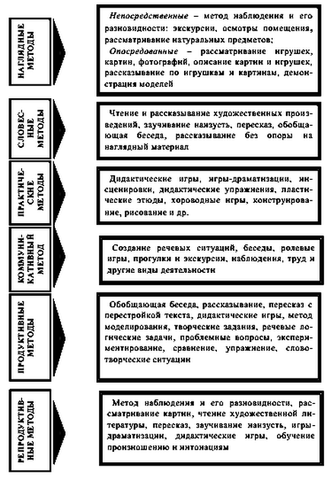
In preschool pedagogy, there are other classifications of teaching methods. Thus, depending on their role in the learning process, direct and indirect methods are distinguished. All of the above verbal techniques can be called direct, and a reminder, remark, remark, hint, advice - indirect.
Structural and logical diagram 2. Methods of developing children's speech.
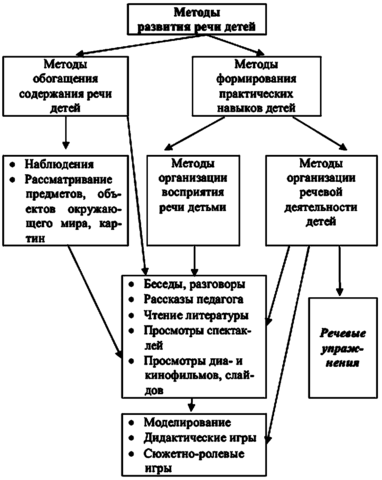
In the real pedagogical process, techniques are used comprehensively. So, in a generalizing conversation, various types of questions, showing objects, toys, paintings, playing techniques, artistic expression, evaluation, and instructions can be used. The teacher uses different techniques depending on the task, the content of the lesson, the level of preparedness of the children, their age and individual characteristics.
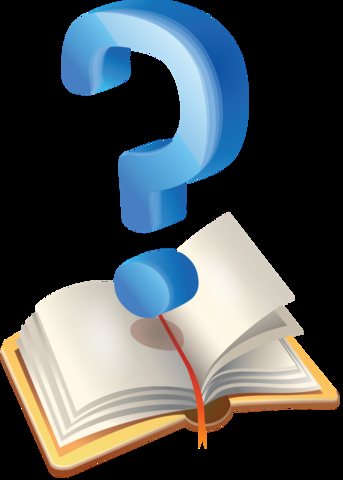
Why is it necessary to characterize speech development methods from the point of view of the nature of children’s speech activity?
Why are productive methods needed?
Literature:
Alekseeva M. M., Yashina B. I. Methods of speech development and teaching the native language of preschoolers: Textbook. aid for students higher and Wednesday, ped. textbook establishments. — 3rd ed., stereotype. — M.: Publishing House

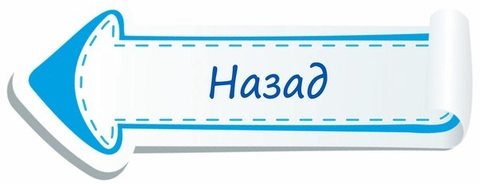
In order to return to the MAIN page from any page of the site, just click on the full name of the site’s author (Golskaya Oksana Gennadievna), also located in the upper right corner of the page.
Development through creativity and musical instruments
By the age of four, a child can draw with many tools. If a three-year-old child does not clearly feel the boundaries of the drawing, then the older one is already trying not to go beyond the limits and uses many colors. A 4-year-old child can already cut out figures for appliqué himself, gluing them into three-dimensional compositions. At three years old, the child makes balls and sausages, and a year later he is able to connect sticks into a ring and create bizarre shapes reminiscent of fairy tale characters. From the age of three, imagination begins to actively manifest itself; by the age of four, it is already embodied in drawings and in games with plasticine.
As for musical development, it is important to teach how to listen to music and describe its character (sad or cheerful, fast or slow). It is necessary to support the child’s desire to sing and dance. You can introduce musical instruments and the sounds they make, as well as the differences in the sounds of notes.
Guide The VillageBig future: 5 methods of early childhood development
Many parents begin educating their child from birth: in addition to the development of motor skills and speech, foreign languages, painting and mathematics lessons are used. True, the benefits of such activities are not confirmed by scientific research. The founder of a network of children's centers and the author of a book on raising children, Natalya Alyokhina, told The Village what potential is inherent in children from birth, how to develop it without harming it.
Natalia Alyokhina
co-founder of CityKids children's centers, author of the book “#First365”
What is early development
The term “early development” itself officially appeared relatively recently - in 1971. Its creator, one of the founders of Sony Corporation Masaru Ibuka, proved the need for a conscious, targeted approach to the development of children at an early age - up to three years. He opposed the generally accepted position of non-intervention and the belief that during these years the child develops on his own. Over time, the term was transformed from “early development” to “advanced development” and a fashion arose for learning foreign languages almost from birth, mental arithmetic up to one hundred by the age of two, and professional sports from the age of three.
Do kids really need this?
Sometimes intensively trained children are actually ahead of the school curriculum and have an excellent memory, but at the same time they have difficulty understanding and expressing their emotions, do not know how to play team games, are practically devoid of creative skills and are generally extremely unconfident. Similar results forced psychologists and methodologists around the world to turn to the roots and look at child development from a scientific point of view.
In recent decades, scientists have been conducting various studies in the field of the functioning of the children's brain. Thus, studies conducted by British experts at Baby Sensory noted interesting dynamics in the development of neural connections in the brain, which directly affect brain weight. Neural connections are formed due to the acquisition of some experience during the interaction of neurons with each other. In the first three years of life, the weight of the brain grows almost exponentially (0.5 kilograms in a newborn, a kilogram per year, one and a half at three years, while the weight of the adult brain is about three kilograms). Moreover, in the first year of life, a child has almost twice as many neurons as the average adult.
It would seem that with such dynamics, the percentage of people with high IQs should be much higher. But the simple principle of use it or lose it applies here. Neurons that fail to communicate with other brothers in a neural connection simply die off. Therefore, the first three years of life, when the most active process of formation and strengthening of neural connections takes place, is one of the most important periods in life. It is at this time that the foundation of the future child is laid. And the most favorable period is the first six months of life, when the body requires the least effort to form these useful connections.
Experts note that not all areas of the brain are equally susceptible to the formation of neural connections in the future. It is in the first three years that it is most effective to develop the baby’s sensory organs, emotional sphere, and take care of the development of his speech, motor and social skills.
As for the development of intelligence, the corresponding areas of the brain are activated in children closer to three or four years old, so it is quite pointless to force a one-year-old/two-year-old child to learn foreign languages and memorize any information; he is simply not physically adapted for this yet: his body is This is the time to learn completely different things. But playing with a ball, which simultaneously involves both arms from the shoulders to the hands, contributes to the development of speech, and in the second year of life, so-called Purkinje cells are formed in the baby’s cerebellum, which are responsible not only for the coordination of movements, but also for the speed of mental reactions.
Similar conclusions of scientists led to a revision of educational systems at the state level. Thus, in the UK, special standards have been introduced in the field of development of children from one to seven years of age, where the main priorities are social-emotional, personal and physical education, as well as speech development. Mathematics, grammar, music and other subjects are specialized there - they are taught after the priority areas have been mastered. In some European countries, three-year-old children have a special discipline called small talk, where children learn to start and maintain a conversation in any situation. And American parents are actively developing their children’s communication skills - after all, it is the communication skills and the ability to socialize that determine whether a child will be accepted into one of the best kindergartens.
In general, kindergartens both in Russia and abroad offer a huge number of a wide variety of early development methods - comprehensive, general developmental and specialized, educational. Understanding them is not always easy, we looked at the pros and cons of the five most popular methods.
The most popular techniques
Glenn Doman Method
Glenn Doman, an American physical therapist, worked on a whole system of early development, but its most famous and accessible element was Doman's cards - tablets with images of large words (precisely whole words, not letters) and sets (not individual numbers).
Pros: Visual memory training.
Cons: The child perceives words, not individual letters, which has a bad effect on his further logical development and ability to creatively approach the solution of a particular problem. Insufficient socialization of children.
Baby Sensory Method
This technique was developed in the UK and quickly became popular in many countries around the world, including Russia. The development of the baby begins from birth. The Baby Sensory program pays attention to the physical, emotional and speech development of the child. Classes are formed taking into account age, so you can study Baby Sensory from the first days of your baby’s life. Children receive sensory and social experiences, and mothers receive useful information for the development of the child. Babies actively show interest in other children, communicate in their own way and even make friends in the first year of life.
Pros: Excellent socialization and development of communication skills from the first days of a child’s life. Comprehensive development of the baby - creative, logical, physical and emotional.
Cons: Insufficient prevalence of the program in Russia.
Makoto Shichida's technique
Japanese professor Makoto Shichida considered it extremely necessary to stimulate the development of the child’s right hemisphere - creativity and intuition. His technique is based on showing slides on various topics for 30–45 minutes. Makoto Shichida was sure that such brain stimulation in children helps develop genius abilities and talents. As the participants in the experiments admitted, the whole process requires a very large involvement of the mother - both at the stage of preparing presentations with slides (about a hundred slides a day), and during the involvement of the child. Simply engaging with your child in a free play manner will not work here.
Pros: Parents spend a huge amount of time with the baby, which has a beneficial effect on him.
Cons : Too much involvement of the mother in the process of preparing presentations. Little attention is paid to the development of the left hemisphere, and therefore to logic, motor skills and analytical abilities. The technique contains ambiguous esoteric elements.
Maria Montessori Method
The most popular method in Russia is what most kindergartens and development centers use. The main goal of the technique is the development of feelings, speech and understanding of order. The play space includes toys of various shapes and textures that the child must choose to play with.
Pros: Kids learn to be attentive and disciplined, learn tactile perception of things. Thanks to games for the development of fine motor skills, the left hemisphere of the brain develops well in children, which further improves their analytical abilities and logic.
Cons: Minimal attention to children's creative abilities and, as a result, poor development of the right hemisphere of the brain. Children do not develop physically - there are few sports games. Poor socialization of children - individual games are preferable to group games, children become closed. The technique is simply contraindicated for active and creative children.
Nikitin's technique
The authors of the methodology are parents with many children, who first of all tried to teach their children independence. The basis is simple things: work, closeness to nature, naturalness and practical creativity. The parent only creates the conditions for the child’s development, while the child has the right to make his own choice about how much and what to do. The system is built on the principle of “from simple to complex” and includes a set of gradually more complex developmental and sports tasks. A lot of attention is paid to the physical component - daily exercises, sports, and hardening are required from birth.
Pros: Joint development of mother and child. Mental and physical development of children.
Cons: This is not a technique, but rather a lifestyle that cannot be maintained in an urban environment. Little attention is paid to the development of communication skills. Creativity is excluded in principle. Cruel hardening methods: dousing with ice water, walking barefoot in the snow.
Cover: tverdohlib – stock.adobe.com
Methods of child development

There are various original scenarios for accelerated development classes. Many parents doubt the benefits of using developmental exercises, arguing that it is harmful; it will still be taught in kindergarten and at school. But any knowledge, especially acquired unobtrusively during the game, will not be superfluous. Let's consider the most commonly used methods for child development:
- Nikitin's program. The main rule of working according to this method is, firstly, freedom in studies. Children are allowed to play unlimitedly with the object or game they like, combining different types of activities. Secondly, the apartment should have a sports environment, special attention is paid to hardening. Thirdly, parents should participate in children's games, and most importantly, in the child's life. You can’t put pressure on kids, but you should focus on their desires and well-being. Teachers focused attention on “advanced” conditions of development.
- Maria Montessori's method. The main postulate of the teacher is to awaken the child’s interest in actions with the subject, and not to force it. The basis of the program is an individual approach to the child. When planning activities, they focus on what the child likes and what he doesn’t. The child performs the exercises independently, occasionally resorting to the help of a teacher.
- Glenn Doman's method. The teacher pays an important role to the physical improvement of the child, without which, in his opinion, “there will be no developed intelligence.” Speech development of children 3-4 years old begins with showing a set of cards on which words are written entirely. The child is shown a set of cards for a short time, naming what is written. The baby also acquires counting skills with the help of cards that show different numbers of dots. In this case, it is necessary to name the number of points, quickly changing cards. In the same way, the child is introduced to knowledge in the field of art, history, music, and so on.
The choice of technique remains with the parents. The development of 3-4 year old children is always accompanied by a huge number of questions and curiosity. Parents may not adhere to a specific lesson plan. The main thing is to be an open source of information for the child, as well as actively participate in his life.
Modern methods of preparing children for school.
Modern methods of preparing children for school.
Many parents, when sending their children to school, are upset that the child is not fully developing his abilities.
According to a number of modern teachers and psychologists, teaching methods in our schools are significantly outdated, require radical updating, and it is better to start teaching a child from an early age in order to maximize his potential. At the age of 3-4 years, they perceive information most effectively.
There are many preschool institutions in Russia that offer a variety of activities to prepare children for school. It is useful for parents to understand each of them in order to choose the most interesting and effective option for their child.
Zaitsev’s method, aimed at the development of children 3-5 years old, suggests quickly teaching a child to read using special cubes of different sizes and colors. An adult gives an interesting task, and the child completes it with the help of cubes. At the same time, the baby is significantly liberated, and he remembers information from hearing, and also develops visual memory.
The Nikitins' methodology, aimed at preschool development, offers a number of interesting logical tasks based on the interaction of a child with an adult. Together they must suggest ways to solve puzzles using cubes, cards and construction sets. The method develops the child’s imaginative thinking and logic well.
The Doman method also prepares the child for school. Children are offered all kinds of cards with images, letters and words that need to be memorized and spoken, as well as a large number of other exciting logic tasks. The method stimulates the activity of the nervous system well and effectively develops the perception of new information.
The Motessori method is a special systematic developmental activity for preschool children. They include a large number of different games using all kinds of geometric shapes, colors, textures that well develop the child’s tactile sensations, motor skills, memory and imaginative thinking.
The unique “mental arithmetic” method shows high results; its programs are designed for classes from 4 to 16 years old. Training occurs with the help of special oriental abacus called “soroban”, which teaches oral arithmetic. During training, children gradually get used to recreating “soroban” from memory. Using this method, they not only add or subtract complex numbers, but also multiply and divide them in their heads. Children who study in this program develop at a tremendous pace, significantly ahead of their peers.
The right and left hemispheres make up the human brain. The right hemisphere forms imaginative thinking, tactile sensations, and touch. The left hemisphere is the logic, analysis, and speech abilities of a person. When two hemispheres work effectively at the same time, then a person has every reason to become a real genius in any field of knowledge. Only 5% of people on Earth have both hemispheres of the brain developed at the same time. Mental arithmetic stimulates the work of the right and left hemispheres of the brain, which forms the child’s photographic memory and special thinking.
“Mental arithmetic” stimulates the child’s ability to perceive large amounts of information and teaches him to make calculations of complex examples orally. The program is conducted by qualified teachers in a playful, interactive form that will interest children of all ages and teach them “mental arithmetic” in a fun and interesting way. A child who has been trained using this method has a high chance of successful self-implementation in any field of knowledge. MENTAL ARITHM
The course “Mental Arithmetic” is intended for preschoolers and schoolchildren. Age range - from 5 years to 16 years. Mental arithmetic is a technique that actively promotes the intellectual development of children, increasing mental abilities and creativity through oral arithmetic calculations and the development of bihemispheric thinking.
Mental arithmetic courses develop:
- Imagination.
- Creative skills.
- Speed of reaction.
- A non-standard approach to any situation.
- Creativity.
- Leadership skills.
- Perseverance and attentiveness.
- Memory.
- Interest in studying other disciplines.
- Quick math in your head.
The skills developed by mental arithmetic courses are an excellent foundation for the further development of your child! Learning any other information becomes much easier!
Why do we need mental math for children?
- Reaction speed and memory performance improves.
- The brain is trained.
- New information is quickly perceived.
- The child’s level of safety in life increases.
- Achievement in basic school subjects improves.
- 100% guaranteed results.
Mental arithmetic is a technique that has been used in our country not so long ago, but is already widely in demand. Many people want to know - where and how did it appear? The emergence of mental mathematics is usually associated with the invention of the abacus abacus by the ancient Chinese - this happened more than five thousand years ago. Then the Japanese improved these abacus. Today they are called "abacus".
Mental arithmetic for children is a system that has no analogues. The program is divided into several fragments and structured in such a way that the result is maximum:
- The first lesson begins with children becoming familiar with both physical and mental abacus. In all classes, two types of calculations are studied at once;
- just four weeks of regular mental arithmetic classes is enough for a child to solve examples in his head much faster than any adult;
- after two months of classes, children solve examples in their heads while reciting the poem out loud;
- in a year the child will master all the rules of addition and subtraction when counting in his head;
- When the child completes the course (it will take 2-2.5 years), he will easily use all the rules of multiplication and division for mental calculation.
If your child is 5 years old, can count from 0 to 10 forwards and backwards, and can also relate numbers to quantities, then he can already be enrolled in a trial lesson in mental arithmetic. The very first exercise will be a step into a world of amazing opportunities for your child!
Memorica is a fascinating memory development course designed for preschoolers and schoolchildren from 6 to 16 years old.
The main goal of Memorika is the active development of children's memory. Thanks to modern technologies, it accelerates the development of memory, imagination and thinking in children.
A good memory is one of the important components of our success. In any business, communication skills, creativity, attentiveness and a good memory are valued. The Memorica course is an excellent school for the development of intelligence, promoting the growth of cognitive qualities of thinking. Parents should pay attention - this is especially useful for preschool children.
Knowing how memory works, you can learn to quickly memorize a large amount of information without effort. At Memorika children's memory development courses, children learn unique memorization methods. Techniques for developing intelligence are a very simple thing: by doing simple memory training exercises every day, children will be able to remember information perfectly.
Memorics are verified methods for developing intelligence.
At the first lesson, the starting indicators of the students are determined. To determine them, a special testing system has been developed in the Memorica course. These metrics are then used to track student progress. For training, an exclusive methodology and patented textbooks are used, in which children complete tasks.
What is the school of memory and intelligence development based on?
The development of memory involves thinking, imagination, attention, and creative activity. Without all this, the activity of the mind is unthinkable.
Excellent memory rests on three things - imaginative thinking, systems thinking and memory process management. Imaginative thinking makes the world brighter, and us - creative people. Systems thinking allows you to see a holistic picture of what is happening and understand the true causes of events in the world around you.
Thanks to the imaginative and systematic thinking that is developed during the Memorics course, children master various mnemonics, which are a set of various techniques and methods for developing intelligence that make it much easier to remember large amounts of information. The developed systems for the development of intelligence transform the mind in a short period of time.
Memorika is an author's program.
At the school for the development of memory and intelligence, children complete tasks with pleasure and ease and get excellent results! The classes don't take much effort, and learning ways to improve your memory is easy and fun!
What exactly will a child remember when attending memory development courses for children?
- After the 2nd lesson: cell phone number and what homework was assigned at school the next day.
- After the 4th lesson: 8 lines of the poem the first time.
- After the 6th lesson: learn the oral lesson 1 time.
- After the 8th lesson: remember 10 characters - appearance and information about them, and also remember the compositions of 10 art paintings in detail.
- After lesson 10: mathematical and spelling rules.
- After the 12th lesson: remember the daily volume of school lessons the first time or make a detailed oral presentation. Fully apply all acquired knowledge on Memorica.
The results of Memorika are a decrease in the difficulties of learning and an increase in interest in it. Memorica allows you to easily and playfully explore the world around you. The textbooks and platform provide a reliable standard of learning quality!
It is very important for a person to acquire new knowledge. This is why we study foreign languages or master musical instruments. Any skill develops as a result of receiving information. How quickly a person reads determines how quickly he learns new things.
Speed reading can greatly improve your life. To master it, you need perseverance and a desire to develop a love of reading. This skill will be extremely useful for those seeking to learn new things. Having mastered it in practice, you can save a lot of time.
The goal of the Liberica course is to develop reading speed and achieve the highest possible understanding of the text read. The goal of the speed reading school is to gradually enlarge the perception of the text. After the development of speed reading, the text for the child will become a three-dimensional picture into which you can immerse yourself and live it. The result of using this technique is the discovery or development of a love of reading.
Quick reading allows you to:
- Increase your reading speed, first of all, “to yourself.”
- Increase your reading comprehension level by using your memory to its full potential.
- Develop imaginative thinking and interest in reading in general.
Every day, schoolchildren are faced with large volumes of literature that must not only be read quickly, but also memorized. Liberica is an innovative technique for improving reading speed, allowing you to read quickly and efficiently. Speed reading for children is a way to learn maximum concentration on a text. If a child is distracted or does not like reading, then Liberica will be the solution to the problem.
These skills last a lifetime. Having speed reading skills and developed memory, a child becomes more confident in himself and his self-esteem increases. Fast reading develops the skill of effectively implementing new knowledge.
Learning to read quickly will help your child:
- Read “to yourself” 5 times faster and understand up to 100% of the information read.
- Be more attentive and focused when studying information.
- Confidently master not only the school curriculum, but also additional disciplines.
- Consider the reading process from an interactive point of view.
- Read quickly and easily, regardless of the situation and learning difficulties.
- Arouse genuine interest in reading various literature.
Speed reading school for children provides the following benefits:
- Children are taught speed reading exclusively using patented textbooks and proprietary materials designed to speed up reading.
- All stages of studying Liberica are interconnected, taking into account the gradual complication of the material.
- Classes are held in a playful way; the course pays a lot of attention to the theoretical aspects of speed reading and changing the perception of reading books and various information.
- Each lesson, children test their results and can write them down.
- Children can express themselves by doing exercises at home. The child’s achievements are stored on an online platform and are also included in special educational materials.
Liberica is a unique course that was developed taking into account the wishes of parents and specialists involved in the training and development of preschool children.
Liberica's speed reading courses are suitable for junior and senior high school students. To begin learning, a child needs to read word by word at a minimum of 40 words per minute.
The Rubik's cube is a colorful and popular toy that children often take with them on trips to pass the time. However, in addition to its entertainment function, it is an ideal mental simulator that gives positivity and promotes development:
- systems thinking;
- fine motor skills of both hands;
- spatial imagination;
- logical thinking.
Special courses on Speedcubing involve high-speed assembly of a bright toy in the shortest possible period of time. In addition to the classic assembly of the structure, the child will also learn to assemble various patterns.
Speedcubing courses: what are these classes?
Solving a Rubik's Cube in the company of other children under the strict guidance of real professionals is an effective learning experience that is intended for students aged 7 years and older.
The courses presented help:
- develop the mental activity of children, which subsequently has a positive effect on the development of the left and right hemispheres;
- speedcubing for children is an excellent way to effectively train memory and children's logic;
- training of three-dimensional spatial thinking.
Speedcubing is designed for children aged 7 to 16 years. In some cases, individual situations may be considered when children aged 6 years and older are enrolled in lessons.
The learning process is incredibly interesting, thanks to the game form of the classes. It is important that the child is able to perceive these courses not as a boring lesson at school, but as an exciting game process, as a result of which one can discover many interesting facts.
Rubik's Cube courses for little intellectuals
To keep their children occupied during the summer holidays, many parents choose Rubik's Cube courses.
As they climb the steps, children gradually move from one stage to the next. As a result, the program is designed in such a way as not to overload children with large amounts of new information.
Today, there are a huge number of different methods that are used to teach a child reading skills.
All classes are held in a playful way, which is especially important for little fidgets. After all, preschoolers associate any lesson with a long and boring study of new information that must be memorized. Much depends on the way this information is presented, as well as on the atmosphere in the classroom. This is what influences further progress in learning.
Reading School: Using an Online Platform
Organized reading courses imply the use of not only a certain set of textbooks, but also the use of an online platform as the main gaming component. Modern children are very familiar with computers, and parents are only in favor of automating the learning process and abandoning the old form of presenting new information.
Children quickly adapt to innovative solutions, which has a positive effect on their overall development, guaranteeing a bright and progressive future. Initial learning to read involves completing unique tasks presented on the appropriate online platform. Moreover, the results of such classes will be noticeable in the shortest possible time not only to the teacher, but also to parents.
Learning to read contributes to the active development of such important mental functions as:
- logical thinking;
- memory (the baby can remember much more information that is fascinating to him);
- speech (development of the speech apparatus);
- imagination and children's fantasy;
- perception.
The main task of highly qualified teachers is not only to teach the child to read various texts, but also to teach him to understand what he read. A child can pronounce sounds correctly and read every word, but what good is this if he does not understand the meaning of words, phrases and sentences?
Don’t rush and try to teach your child to read as quickly as possible. It is important to focus on understanding and awareness of what he has read. Thus, teachers are focused on quality, not speed.
How do children learn to read?
To teach children literary reading, you will need to competently plan the entire course and organize the correct presentation of educational material.
